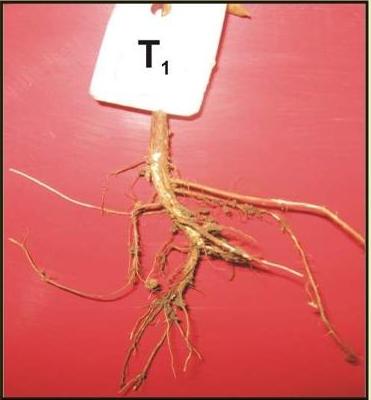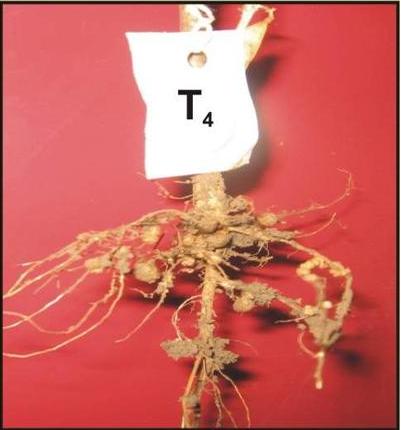Biochemical Efficacy of Homa Organic Farming in Soybean CropThe following experiments with Agnihotra and Homa Therapy were conducted at University of Agricultural Sciences, Dharwad, Karnataka, India.
Published in Karnataka J. Agric. Sci., 23 (5) : 2010 pp. 841-2A field experiment laid out in completely randomly block design with eight treatments exposed to Homa atmosphere replicated thrice was conducted during Kharif (monsoon) season 2009 to study the Biochemical efficacy of Homa Organic Farming in soybean crop (JS 335).
Above: Healthy soybean crop which showed increased nuturient content and higher yield
Conditions of Experiment:
The conventional control (CC) and control without Homa (CWH) were maintained 1 km away. Basal treatment to all the Homa treatment (HT) seeds was fresh cow dung and cow urine.
Agnihotra was performed at sunrise and sunset and Om Tryambakam Homa performed for 3-4 hours daily. The Agnihotra ash was used for seed treatment and for furrow application. Biosol, a special organic fertilizer prepared with Agnihotra ash, was used for soil and foliar application.
Table 1. Effect of Homa Organic Farming on Soybean Crop

Observations:
The Tryambakam Homa ash as seed treatment and foliar application of Biosol achieved superior plant height, dry matter accumulation of leaves, grain and straw yield and 100 seed weight.
The Agnihotra ash as seed treatment with Biosol as soil application was significantly superior over control in dry matter accumulation in stem, total biomass per plant, number of pods per plant, nodule count and nodule dry weight wherein Homa ashes and Biosol as furrow application increased nodule count by 55-105 per cent over CC and 106-180 per cent over CWH.
The macro and micro nutrients increased significantly in the soil with furrow application of both the Homa ashes and Biosol. Soil Zn content and dehydrogenase activity increased (151% and 233%, respectively) over control with soil application of Agnihotra ash and Biosol.
Rust incidence and insect attack was significantly low (10-30 %) with foliar application of Biosol. Total protein and oil content increased on HT and activities of -amylase and invertase in soy seeds on soil application of Biosol were superior.

Left: Root nodule formation of conventional Soyabean

Right: Well-developed root nodule on Homa plant
Conclusion:
Application of Homa Therapy farming techniques improved the following:
- Root Nodule Count
- Plant weight
- Pod quantity
- straw and grain yield
- Control of plant rust
- control of pod borer and caterpillar
- increased nutrient and micronutrient levels
- increased organic carbon
- increased available phosphorus
Thesis details:
KUMARI NAMRATA (Author)
M.Sc (Agri) (Degree)
Plant Biochemistry (Department)
University of Agricultural Sciences, Dharwad (Institute)
AC, Dharwad-580005 Karnataka State, India (Place)
2010 (Year of submitted)
Th10019 (Accession No)
University Library, UAS, Dharwad
Dr. P.W. BASARKAR (Major Advisor)



